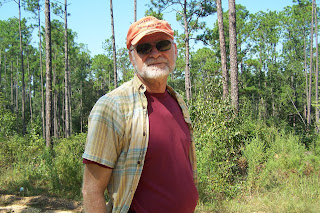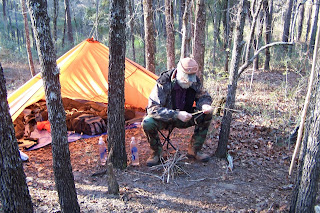I spend a
lot of time walking in the woods. Walking in the woods is a love affair that began as a young boy. It is an intense affair.
In fact, as
part of our retirement lifestyle, Shirli and I now live in the woods. Our tiny
cabin is surrounded by woodland. Our yard, if it can even be called a yard, is
little more than a small clearing. There is no lawn to mow or shrubbery to manicure. Large bay trees, tall longleaf pines, a variety of oaks,
sweetgum, blackgum, red maple, wild blueberry, and a variety of other woody
shrubs and vegetation are our natural landscaping.
The small
clearing is also characterized by surface roots, small stumps and stobs left
from clearing scrub and saplings, and fallen natural debris. I’ve grown to
appreciate the natural debris that is constantly falling from the trees. I am
never without kindling material.
I admit that
I did turn an ankle two winters ago.
Accidents happen. They can happen to the
best of us. I did not break anything, but the incident caused some serious
nerve damage in my foot that took several months to get over. It was my own
fault, something that I paid for with a lot of painful hobbling around. Floppy
slip-on house shoes are not designed for walking around outside in an environment
where surefootedness is a requirement.
Most of the
walking performed by modernites is done on level and smooth surfaces … on the
concrete and asphalt paths and floors of modern life. Most of it is what I call
get there walking. I have done a lot
of get there walking over the years.
Get there walking is really a
mindless type of walking where we don’t think about our steps. We are simply
picking them up, putting them down, and bi-pedal locomoting along as a means to
hurriedly get to where we are going. Heel and toe. Springing along as we go.
Unconcerned about the level surface beneath our feet and, all too often,
unconcerned about the surrounding environment.
 This type of
get there walking is fine for streets,
sidewalks, and floors where most people do their stepping. It is the only mode
of walking that most people are familiar with.
This type of
get there walking is fine for streets,
sidewalks, and floors where most people do their stepping. It is the only mode
of walking that most people are familiar with.
It is,
however, a pitifully poor way to walk in the woods.
I have a
great appreciation for those that wrote about and left behind a record of their
outdoor adventuring in those days-gone-by. There are a number of them that I
would sit around a campfire with if I could. There is a purity and genuineness
about them that evokes deep respect and admiration from me this far this side
of their time wandering the woods. They, in my mind, are the great ones. Their
tools and technology may have been inferior to ours but … pardon me if what I
am about to say offends sensibilities … the rest of us, regardless of what we
think of ourselves, our tools, and our skills, are merely living in their
shadows.
“In walking through a primitive
forest, an Indian or a white woodsman can wear out a town-bred athlete,
although the latter may be the stronger man. This is because a man who is used
to the woods has a knack of walking over uneven ground, edging through
thickets, and worming his way amid fallen timber, with less fret and exertion
than one who is accustomed to smooth, unobstructed paths.” Horace Kephart, The
Book Of Camping & Woodcraft, Chapter XIII, p. 179, © 1906.
There is an
art to walking in the woods. It is not a difficult art to learn. It is
something though, like any other art, that involves consciousness and takes
practice.
It is easy
enough to learn a different way to step so that our feet are landing flatly on
the ground. Simply walking barefoot or in thin soled moccasins for a few
consecutive days on ground filled with pebbles and littered with sticks and
other debris will teach a person to walk lightly and flat footed. The bruises
on the bottom of the heels received the first day will be the greatest teacher.
I think the
most difficult thing involved in learning the art is breaking the patterns of
hurriedness in our minds. The hurry up and get
there lifestyle patterns imbedded in our minds, and the daily get there schedules that birth these
mental patterns, are the mean culprits standing in our way.
Go ahead. Go for a
walk. Take three
times as long as it would normally take to get there.
Enjoy the adventure.
Note: The above photos are gleaned from our archive of photos that we have taken over the years.



































